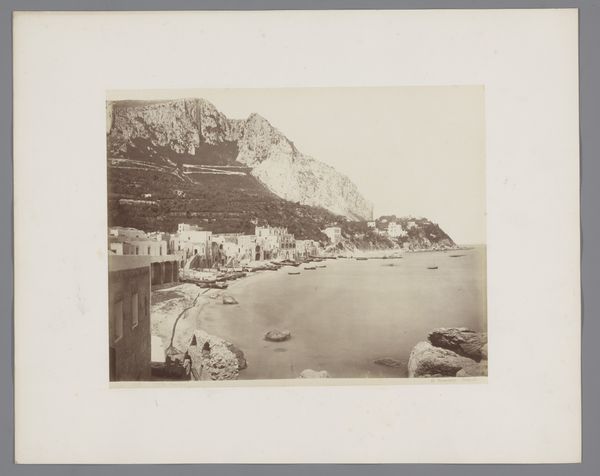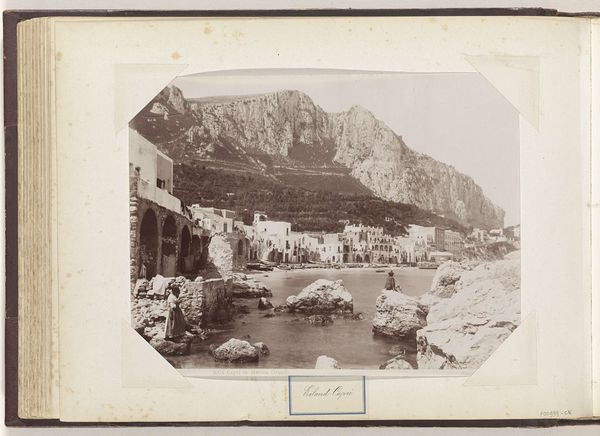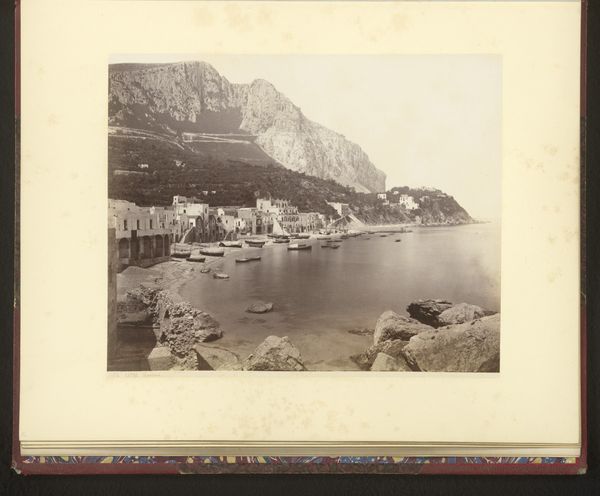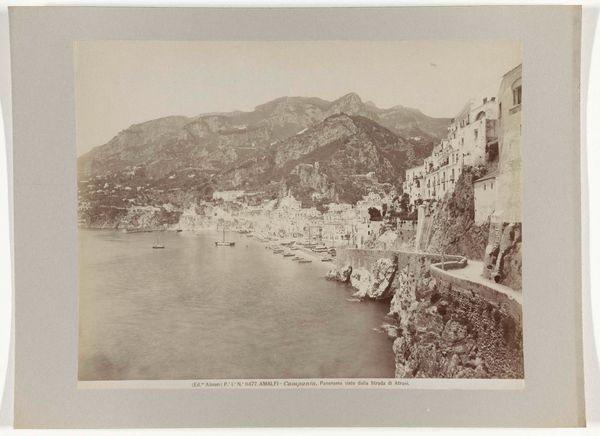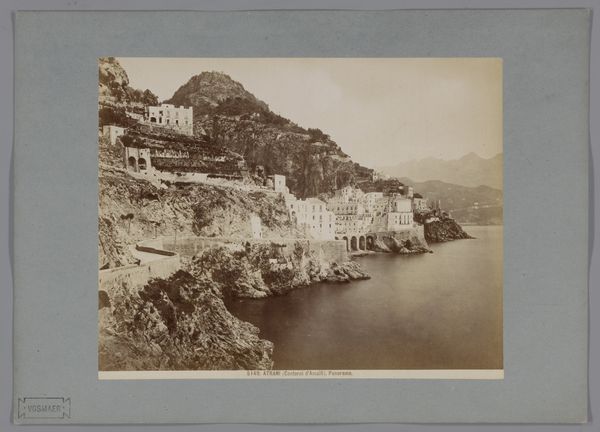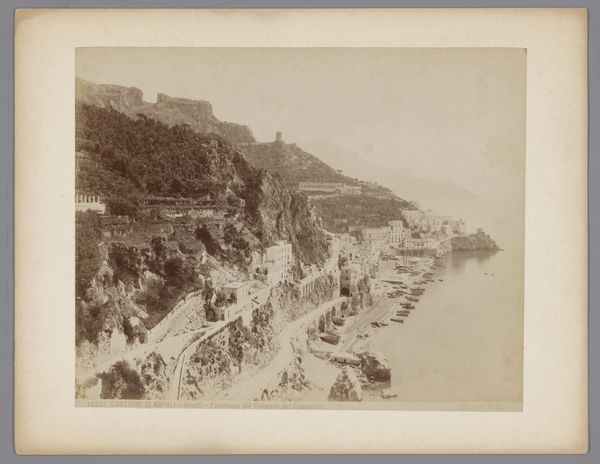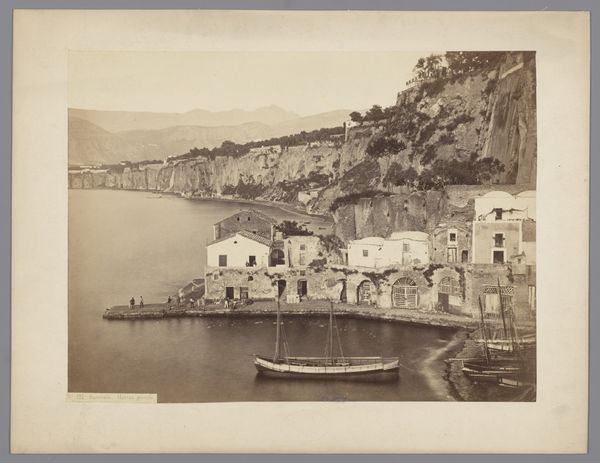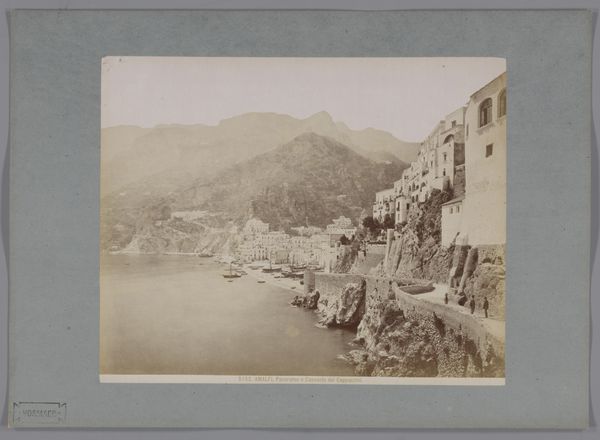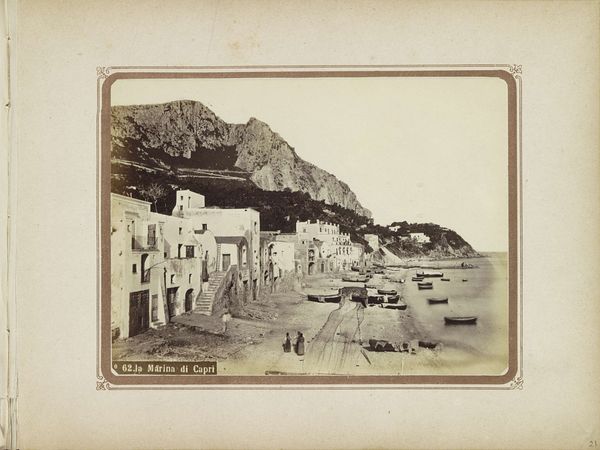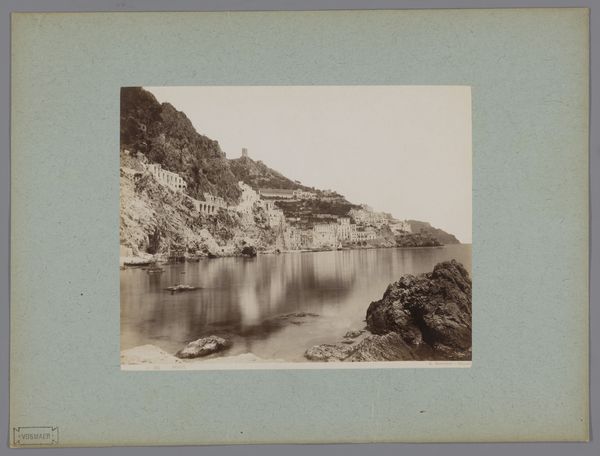
Dimensions: height 201 mm, width 253 mm, height 258 mm, width 358 mm
Copyright: Rijks Museum: Open Domain
This photograph of the harbor on the coast of Capri was taken by Giacomo Brogi sometime in the late 19th century, using a process called albumen print. This method involved coating paper with egg whites and silver nitrate, creating a surface sensitive to light. The albumen process was widely adopted during this period because it allowed for the mass production of photographic prints. The sharp clarity and tonal range of the albumen print capture the natural beauty of Capri, while also reflecting the burgeoning tourist industry and the commodification of landscape views. This image would have been produced for widespread consumption. Photographs like this were part of a larger visual economy, fulfilling a desire for exotic travel without the expense of actually going there. Consider the labor involved in the process - from the collection of eggs to the chemical treatment of the paper. By attending to these factors, we can see how photographs like this one, while seemingly simple, are intertwined with wider social and economic contexts.
Comments
No comments
Be the first to comment and join the conversation on the ultimate creative platform.
